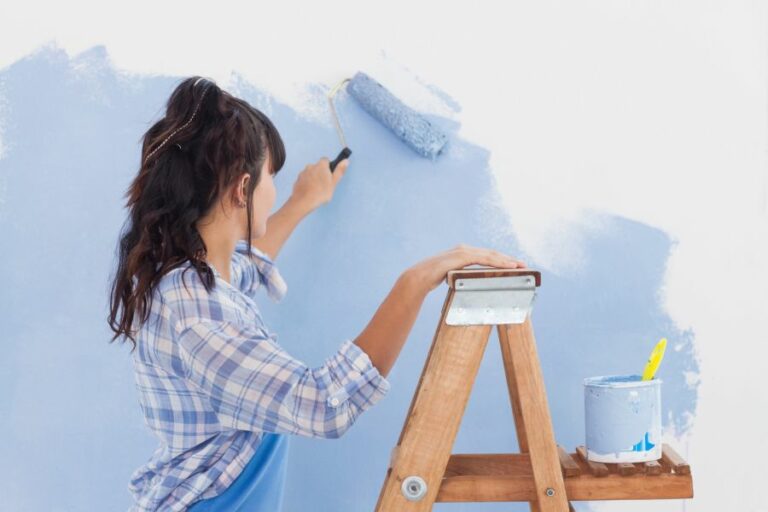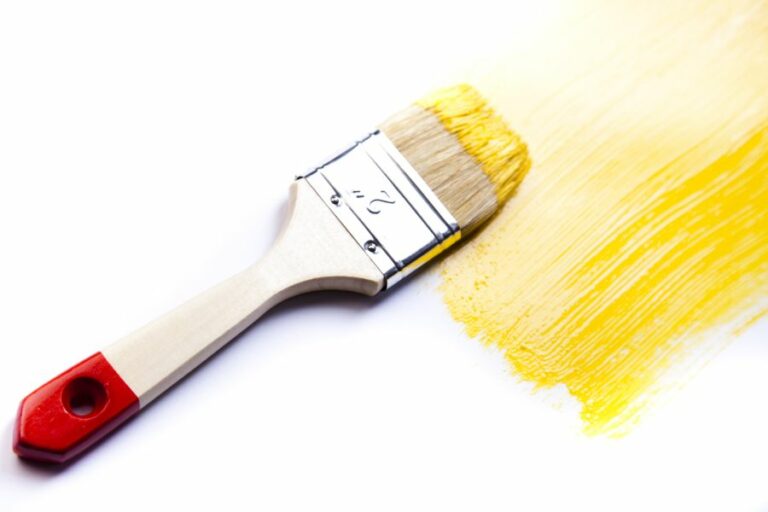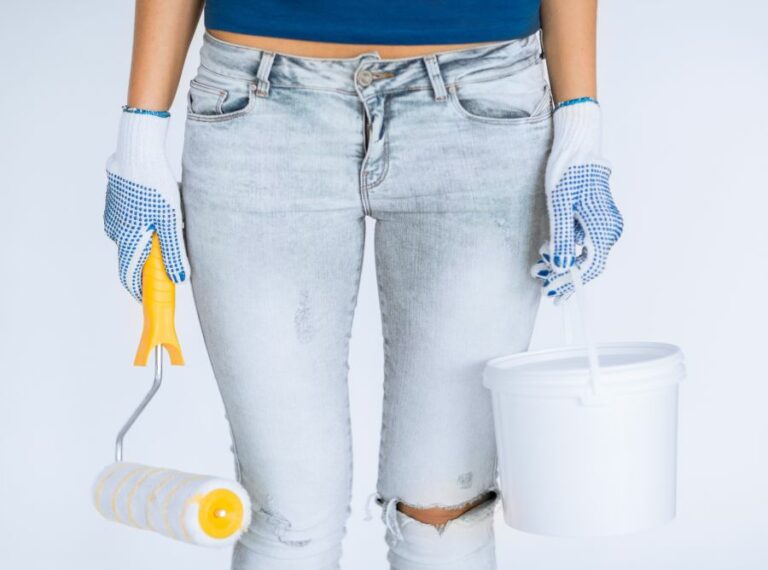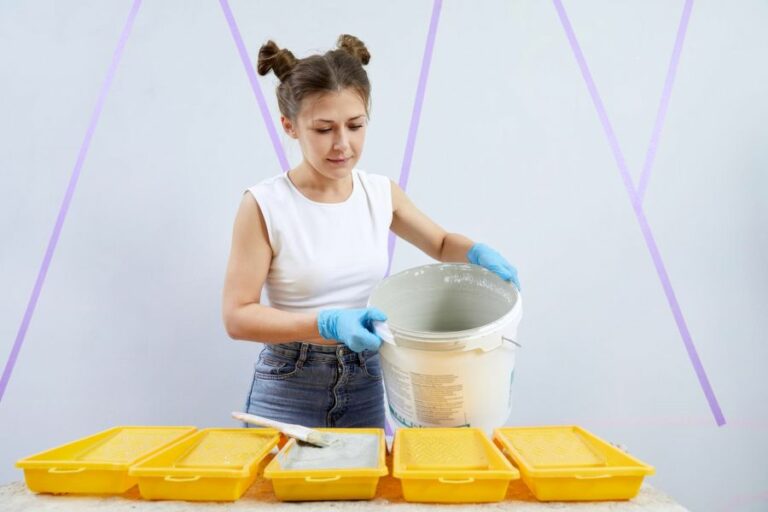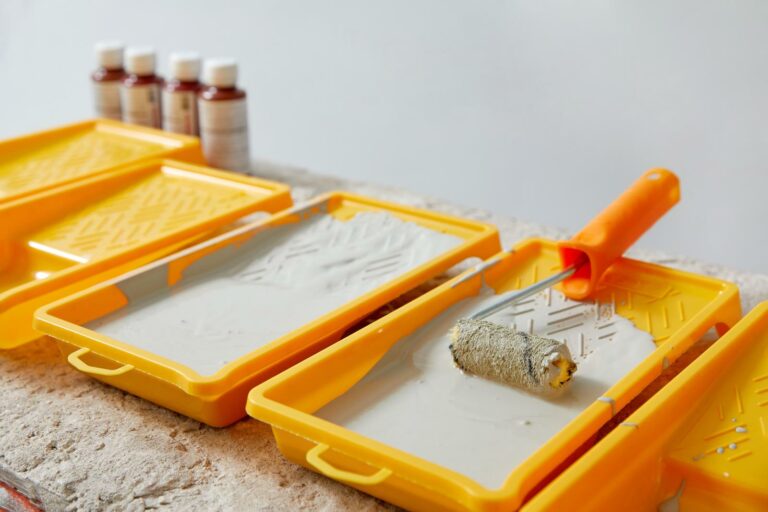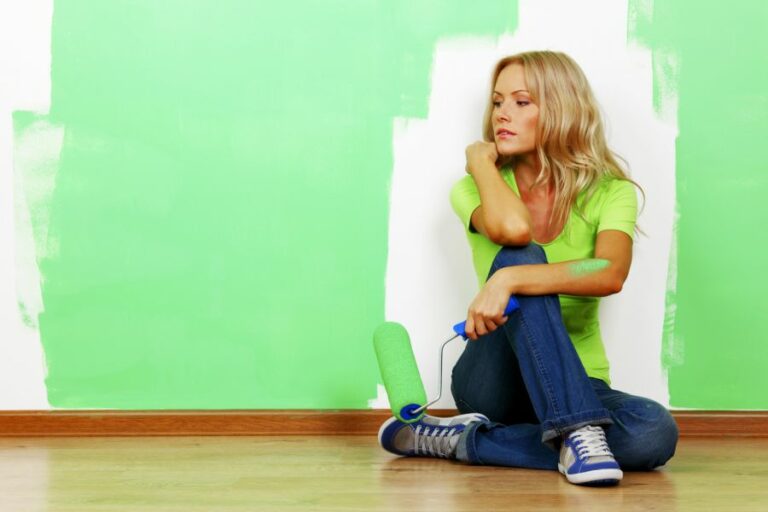Indoor Paint With A Matte Finish, 25 Things You Should Know
Have you ever struggled to choose the perfect paint finish for your interior walls? Worry no more, as I’ve got you covered. Indoor paint with a matte finish is the answer you’ve been looking for to transform your living space into an elegant and stylish haven. I’m confident that this option will help you achieve your aesthetic goals and provide unmatched durability and practicality.
Indoor paint with a matte finish:
Indoor paint with a matte finish is a popular choice for interior walls due to its ability to hide surface imperfections, minimize glare, and create a sophisticated appearance. However, it is susceptible to marks and scuffs and can be challenging to clean. Choosing high-quality paint, the right color, and properly preparing surfaces can ensure a successful application, resulting in a classic and elegant look.

Discover the world of matte finish paints and how they can transform your indoor spaces! From unique visual appeal to hiding imperfections, matte finish paints have a lot to offer. Read on to learn tips and tricks for using this versatile paint finish throughout your home.
Contents
- 1 Matte Finish Interior Paint
- 2 Benefits of Matte Paint on Interior Walls
- 3 Choosing Matte Paint for Indoors
- 4 Achieving a Matte Finish with Paint
- 5 Matte vs. Flat Paint: Interior Wall Comparison
Matte Finish Interior Paint
A well-thought-out design and paint choice can make or break the aesthetic of a room. One of the preferred finishes for interior walls is the matte finish due to its unique ability to give walls a classic, elegant touch.
• Benefits of Matte Finish Paint
– Hides Surface Imperfections
One of the most significant advantages offered by matte finish paint is its capacity to hide surface imperfections. The paint’s flat sheen diffuses light, masking small blemishes and textural irregularities, making it an ideal choice for walls with slight imperfections.
– Minimizes Glare
Matte finish paint possesses a low light reflectivity, which means it doesn’t create a glare when exposed to light. This characteristic is particularly beneficial in rooms with a high amount of natural or artificial lighting, as it helps to create a more pleasing visual experience.
– Offers a Sophisticated Appearance
Matte paint is visually appealing due to its soft, muted appearance. It provides both understated elegance and warmth to a room. This finish is perfect for creating a cozy atmosphere in living rooms, bedrooms, and other spaces where relaxation is essential.
• Drawbacks of Matte Finish Paint
– Susceptible to Marks and Scuffs
One of the main downsides of matte finish paint is its vulnerability to scuffs, marks, and stains. Due to its slightly rough texture and porous nature, dirt and dust can easily accumulate on matte surfaces, making it relatively difficult to maintain.
– Challenging to Clean
As mentioned earlier, cleaning indoor paint with a matte finish can be quite challenging. The paint isn’t as durable as other finishes, and scrubbing the surfaces can damage the paint layer. Hence, it’s best to avoid using abrasive cleaning tools or harsh chemicals when cleaning your matte finish walls.
• Tips for Selecting the Best Matte Finish Paint
When searching for the ideal matte finish paint, it’s essential to consider some factors to ensure that you find the perfect fit for your space.
– Quality of Paint
Investing in a high-quality matte finish paint is essential. High-quality paint provides better coverage, hiding imperfections effectively, and also tends to be more durable, making it less prone to scuffs or marks.
A popular option is Benjamin Moore’s Regal Select Interior paint, as it offers excellent coverage and a long-lasting finish.
– Appropriate Color
Choosing the right color is critical to creating the desired atmosphere in any room. Matte finish paint generally has a somewhat muted appearance, which can be an advantage or disadvantage, depending on the space you’re working with.
Be sure to test the paint on a small surface area before fully committing to a particular color.
– Surface Preparation
Preparing the surface properly before applying a matte finish paint is crucial to achieving a smooth, flawless look. Be sure to clean the walls thoroughly, repair any cracks or holes, and prime the surface if required.
If the wall has a glossy finish, it’s essential to first use a deglosser for better adhesion of the matte finish paint.
• Application Techniques
Using the correct application technique is vital to achieving a uniform, seamless matte finish.
– Use the Right Tools
Using high-quality brushes and rollers is essential when working with matte finish paint a 3/8-inch or 1/2-inch nap roller cover or a paintbrush designed for water-based paints will work excellently.
– Paint in Sections
When applying the paint, it’s best to work in sections, keeping a wet edge to avoid any overlap marks or streaks.
– Apply Multiple Coats
For optimal coverage, applying at least two coats of paint is recommended. Allow the first coat to dry according to the manufacturer’s instructions before applying the second coat.
• Conclusion
Indoor paint with a matte finish can transform the interior of your home, providing a sophisticated and inviting atmosphere. It is crucial to consider the quality, color, and surface preparation when choosing matte paint.
Additionally, selecting the appropriate tools and techniques will ensure the best possible matte finish on your interior walls. For more information on paint finishes, you can visit the Purdue University Extension’s guide on paint finishes.
Remember always to take your time, as attention to detail is key when working with this elegant and timeless finish.
Benefits of Matte Paint on Interior Walls
When it comes to interior wall paint finishes, there is a plethora of options available in the market. Among these, matte paint has gained immense popularity for its aesthetics and versatility. That being said, is matte paint the right choice for your interior walls?
• Understanding Matte Paint
Matte paint, also known as flat paint, is characterized by its non-reflective appearance. Unlike glossy and semi-gloss paint finishes, matte paint absorbs light rather than reflecting it. As a result, it creates a smooth and even finish, making it suitable for various interior wall applications.
– Composition of Matte paint
The primary factor that contributes to the unique attributes of matte paint is the composition of the paint itself. Matte paint has a higher ratio of pigment to binder compared to other paint finishes.
This increased pigment concentration allows for better color retention, coverage, and a rich, velvety appearance.
• Advantages of Matte Paint for Interior Walls
– Aesthetics
Matte paint is hailed for its ability to create a sophisticated look in any room. The soft, muted finish works well for both modern and traditional interior designs.
– Ability to Hide Imperfections
Matte paint excels at concealing wall imperfections like cracks, dents, and bumps due to its light-absorbing properties. This makes it ideal for older walls or surfaces that have been subject to wear and tear.
Additionally, matte paint effectively hides touch-up marks due to its uniform finish, making maintenance easier.
– Versatility
Being a neutral finish, matte paint can be used in various settings and can be paired with different textures and decor styles. It is especially suitable for living rooms, dining rooms, bedrooms, and ceilings where a more subtle, cozy ambiance is desired.
– Less Visible Roller and Brush Marks
When applying paint, roller and brush marks can be a cause for concern. However, the non-reflective nature of matte paint helps conceal these marks, ensuring a smooth and flawless finish.
– Color Retention
As mentioned earlier, matte paint has a higher pigment concentration. This results in better color retention and less fading over time compared to other finishes like satin and gloss.
• Disadvantages of Matte Paint for Interior Walls
– Susceptible to Stains and Scratches
Owing to its porous surface, matte paint is more susceptible to staining and scratching. This can be a concern in high-traffic areas like hallways and children’s rooms, where the walls are prone to damage.
– Difficulty in Cleaning
While matte paint hides imperfections well, it can be challenging to clean. Due to the porous nature of the finish, dirt, grease, and other stains can penetrate the surface easily. In most cases, wiping with a damp cloth will suffice for minor stains.
However, harsher cleaning methods and products may cause the paint to wear off or lose its sheen.
• Considerations Before Choosing Matte Paint
Before opting for matte paint for your interior walls, take the following factors into account:
- Room Usage: If space is likely to be exposed to dirt and stains often, matte paint may not be the best option. Consider using a higher sheen finish like satin or semi-gloss in such areas.
- Wall Condition: Matte paint works well for walls with visible imperfections. But if the wall is relatively flawless, you might want to explore other finishes to showcase that smoothness.
- Lighting: Matte paint absorbs light, making it ideal for rooms with abundant natural or artificial light. However, it might not be the best choice for dimly lit spaces.
- Personal Style: Ultimately, the choice of paint finish should reflect your personal style and preferences. Consider what kind of ambiance you want to create in your space before making a decision.
• Final Thoughts
Matte paint, with its velvety texture, sophisticated look, and ability to conceal imperfections, can be a fantastic choice for interior walls. However, it is essential to consider factors like room usage, wall condition, and ease of maintenance before making a final decision.
Armed with this knowledge, you can make an informed choice about whether matte paint is the right fit for your interior walls.
Choosing Matte Paint for Indoors
Choosing the right paint finish for your home is a vital aspect of home decoration. The paint finish determines the overall appearance and durability of the painted surface.
• What Is Matte Paint?
Matte paint, also known as flat paint, is a type of paint finish that has a non-reflective surface. It contains a higher proportion of pigment, which helps to absorb light and create a smooth, velvety appearance.
Matte finish paint is often preferred for interior walls due to its aesthetic qualities and ability to hide imperfections.
– Benefits of Matte Paint
There are several reasons why you might choose a matte finish for your interior paint. Some of its benefits include:
Hiding Imperfections
A major advantage of matte paint is its ability to cover small imperfections and uneven surfaces, such as bumps, holes, and cracks. This is due to the high pigment content, which provides better coverage and helps to mask any irregularities.
As a result, matte paint is excellent for older homes or walls with visible flaws.
Reducing Glare
As matte paint has a non-reflective surface, it absorbs light and reduces glare. This can be especially beneficial in rooms that receive a lot of natural light, such as living rooms and sunrooms. The absence of glare creates a more comfortable and soothing environment.
Enhancing Color Depth
The rich and velvety texture of matte paint adds depth and dimension to colors. This can make them appear more vivid and striking, especially when used with bold or darker shades. For this reason, matte paint is often recommended for feature walls or spaces where you want to create a statement.
– Drawbacks of Matte Paint
While matte paint has its advantages, there are some potential drawbacks to consider.
Less Durability
One of the main disadvantages of using matte paint is its lack of durability compared to other paint finishes. Due to its porous nature, matte paint can be more susceptible to stains, scuffs, and marks.
This can be problematic in high-traffic areas or rooms where walls are frequently touched, such as kitchens and hallways.
More Challenging to Clean
Matte paint’s texture can make it more difficult to clean and maintain compared to other finishes. Cleaning can remove the paint’s protective layer, resulting in a shiny or “burnished” surface.
Consequently, matte paint might not be a suitable choice for households with young children, pets, or a high level of activity.
– Alternatives to Matte Paint
If you’re unsure about using matte paint, there are a few other paint finishes to consider:
Eggshell
Eggshell paint has a subtle sheen that is slightly glossier than matte paint. It is more durable and easier to clean, which makes it suitable for high-traffic areas or rooms that require more frequent cleaning, like kitchens and bathrooms.
Satin
Satin paint is another excellent alternative to matte paint, as it offers a balance between durability and appearance. Satin finishes are more reflective than matte or eggshell but still provide good coverage and color depth.
Semi-Gloss and Gloss
Semi-gloss and gloss paint finishes are the most durable and easiest to clean, making them ideal for areas where moisture, fingerprints, or dirt may accumulate, such as bathrooms, kitchens, or doors. However, they tend to highlight imperfections and create more glare due to their reflective surfaces.
• Conclusion
In summary, matte paint is an excellent choice for interior walls if you are striving for a soothing, glare-free environment and want to conceal any surface imperfections. It provides a rich color depth and sophisticated appearance that can enhance the overall aesthetic of your home.
However, if durability and ease of cleaning are primary concerns, consider using alternative finishes like eggshell, satin, or semi-gloss. Ultimately, the choice of paint finish will depend on your personal preferences and the specific needs of your living spaces.
For more information on paint finishes, visit the Paint Quality Institute or consult a local professional for personalized advice.
Achieving a Matte Finish with Paint
A matte finish is a highly sought-after look for both interior and exterior paint jobs. This finish offers a smooth, non-reflective appearance, which can create a luxurious and modern aesthetic in any space.
• Flat Paint
Flat paint, also known as matte paint, is a popular choice for achieving a matte finish. This type of paint has the least amount of gloss, making it perfect for hiding imperfections on surfaces. Flat paint is highly effective for large walls and ceilings, as it absorbs light to create a soft, sophisticated appearance.
One downside of using flat paint is that it can be difficult to clean. Flat paint is ideal for low-traffic areas like bedrooms or formal dining rooms since it’s more prone to marks and stains.
However, many paint manufacturers now offer “washable flat” or “scrubbable matte” options, which can be cleaned without damaging the paint finish.
• Eggshell Paint
Eggshell paint provides a slightly more subtle matte finish compared to flat paint. This type of paint is durable and easier to clean while still providing a low-sheen look that works well in both modern and traditional rooms.
Eggshell is perfect for walls in more active areas, like living rooms, hallways, and bathrooms.
Eggshell paint is less reflective than satin or semi-gloss finishes but still offers a moderate level of shine. If you require a true matte appearance, this might not be the ideal option. However, the durability and ease of cleaning eggshell paint make it a popular choice for many homeowners.
• Choosing the Best Paint for a Matte Finish
Both flat and eggshell paint can create a beautiful matte finish. When selecting the perfect paint for your project, consider the following factors:
– Surface Condition
Do you have any surface imperfections that need to be concealed? Flat paint is more efficient at hiding imperfections, making it ideal for older homes with bumpy walls or ceilings. Eggshell paint, on the other hand, is better suited for smoother surfaces that don’t require as much coverage.
– Traffic Level
Consider the amount of traffic in the area where the paint will be applied. A matte finish is more likely to show dirt and fingerprints, so it’s important to choose a paint that can withstand wear and tear.
If the room is a high-traffic area, opting for an eggshell finish can provide the desired matte appearance while still being easy to clean.
– Budget
Both flat and eggshell paint can vary in price, depending on the quality and brand. Determine your budget before making a decision. Investing in high-quality paint can result in a more durable and longer-lasting finish, which may save you money in the long run.
• Applying Matte Paint
Achieving the perfect matte finish requires careful application. Follow these tips for a professional-looking result:
- Preparation: Clean and prime the surface to ensure proper paint adherence.
- Paint Quality: Invest in high-quality paint to ensure even coverage and lasting results.
- Technique: Use a roller or high-quality brush to apply the paint in thin, even coats. Avoid overloading your brush or roller to prevent streaks and uneven coverage.
- Drying Time: Allow each coat to dry thoroughly before applying additional coats. This prevents uneven textures and patchy finishes.
• Conclusion
Achieving a matte finish can elevate the look and feel of a space. Both flat and eggshell paint options can provide the desired finish, but it’s essential to consider factors like surface condition, traffic levels, and budget when making a decision.
Proper application techniques are critical in achieving the perfect matte finish, so be sure to take your time and invest in the right tools and materials. For more information and guidance, visit Sherwin-Williams’ Matte and Flat Paints guide.
Matte vs. Flat Paint: Interior Wall Comparison
When it comes to painting the interior walls of your home or office, choosing the right paint finish can make a significant difference in the final results.
Two popular options for interior walls are matte and flat finishes, so let’s discuss the differences, benefits, and drawbacks of each, as well as which one might be the better choice for your specific needs.
• What Are Matte and Flat Paint Finishes?
Both matte and flat paint finishes have a non-reflective appearance that can help to hide surface imperfections and give walls a smooth, uniform look. Although the terms are often used interchangeably, there are subtle differences between the two finishes.
- Matte Finish: Matte paint has a slight sheen to it, which makes it more durable and easier to clean than flat paint. It’s a popular choice for bedrooms, living rooms, and dining rooms, where a soft, elegant look is desired.
- Flat Finish: Flat paint, on the other hand, has absolutely no shine or sheen, which makes it ideal for hiding any surface irregularities or imperfections. It’s often used on ceilings and walls in areas where minimal light reflection is desired, such as home theaters or media rooms.
• Comparing Durability and Maintenance
One key difference between matte and flat finishes is their durability and ease of maintenance.
- Matte Finish: Matte paint is more durable than flat paint, which means it can withstand more wear and tear in high-traffic areas of your home. Additionally, matte finishes are easier to clean, as they can typically be wiped down with a damp cloth without damaging the paint.
- Flat Finish: Flat paint, on the other hand, is more susceptible to scuffs, marks, and dirt, which can make it harder to maintain, especially in high-traffic areas. Cleaning flat-painted surfaces can also be more challenging, as vigorous scrubbing can remove the paint and leave shiny spots on the surface.
• Aesthetic Appeal and Versatility
While both matte and flat finishes offer a non-reflective look, their aesthetic appeal can differ depending on the specific requirements of your space.
- Matte Finish: The slight sheen of matte paint can give walls a rich, velvety appearance, making it an excellent option for creating a cozy, inviting atmosphere. Matte finishes can also be used to create a more modern, minimalist look in contemporary spaces.
- Flat Finish: Flat paint, with its complete lack of light reflection, can create a soft, seamless look on walls, which is ideal for rooms where a more subdued, calming atmosphere is desired. However, the lack of sheen can also make flat-finished walls appear dull and lifeless in certain settings.
• Cost Considerations
When comparing matte and flat paint finishes, it’s essential to consider the overall cost implications of each option.
- Matte Finish: Matte paint is typically more expensive than flat paint, partially due to its increased durability and easier maintenance. Additionally, matte paint often requires fewer coats for full coverage, which can reduce the overall cost of your project.
- Flat Finish: Flat paint is the most budget-friendly option, making it an appealing choice for homeowners looking to save on their projects. However, it’s essential to consider the potential long-term costs of maintaining and repairing flat-finished surfaces, especially in high-traffic areas susceptible to damage.
• Making the Right Choice
So, is matte or flat better for interior walls? For most homeowners, matte is likely the better choice due to its durability, easier maintenance, and versatile aesthetic appeal. Those seeking a more budget-friendly option or who require a completely non-reflective finish might opt for a flat finish.
If you’re still unsure which finish is best for your specific needs, consult with a professional painter or interior designer who can assess your space and provide personalized advice.
Remember, the ultimate goal is to choose a paint finish that not only looks great but also aligns with your long-term maintenance and budget requirements.

